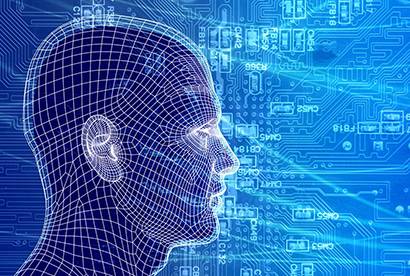Artificial intelligence and other emerging technologies are already changing businesses around the world. In many ways, that’s good news. But it also poses some tough questions – and challenges. A new McKinsey report helps guide the way into the future.
copyright by huntscanlon.com
 We are entering a massive workplace shift that will be marked by rapid advances in automation and artificial intelligence. New research from McKinsey & Co. finds that between 75 million and 375 million workers globally will have to switch occupational categories and learn new skills in just the next 12 years because of automation and the transition to AI and robotics.
We are entering a massive workplace shift that will be marked by rapid advances in automation and artificial intelligence. New research from McKinsey & Co. finds that between 75 million and 375 million workers globally will have to switch occupational categories and learn new skills in just the next 12 years because of automation and the transition to AI and robotics.
McKinsey Global Institute’s latest report, “ Jobs Lost, Jobs Gained: Workforce Transitions in a Time of Automation ,” assessed the number and types of jobs that might be created under different scenarios through 2030 and compared that to the jobs that could be lost to automation.
The results revealed a rich mosaic of potential shifts in occupations in the years ahead, with important implications for workforce skills and wages. The report found that while there may be enough work to maintain full employment to 2030 under most scenarios, the transitions will be highly challenging—matching or even exceeding the scale of shifts out of agriculture and manufacturing that have been seen previously.
What impact will automation have on work?
About half the activities that people are paid to perform globally could theoretically be automated using currently demonstrated technologies, according to McKinsey. Few occupations—less than five percent—involve activities that can be fully automated. In about 60 percent of occupations, however, at least one-third of the constituent activities could be automated, implying substantial workplace transformations and changes for all workers.
While technical feasibility of automation is important, it is not the only factor that will influence the pace and extent of automation adoption, said the report. Other factors include the cost of developing and deploying automation solutions for specific uses in the workplace, the labor-market dynamics, the benefits of automation beyond labor substitution, and regulatory and social acceptance. […]
read more – copyright by huntscanlon.com


Artificial intelligence and other emerging technologies are already changing businesses around the world. In many ways, that’s good news. But it also poses some tough questions – and challenges. A new McKinsey report helps guide the way into the future.
copyright by huntscanlon.com
McKinsey Global Institute’s latest report, “ Jobs Lost, Jobs Gained: Workforce Transitions in a Time of Automation ,” assessed the number and types of jobs that might be created under different scenarios through 2030 and compared that to the jobs that could be lost to automation.
The results revealed a rich mosaic of potential shifts in occupations in the years ahead, with important implications for workforce skills and wages. The report found that while there may be enough work to maintain full employment to 2030 under most scenarios, the transitions will be highly challenging—matching or even exceeding the scale of shifts out of agriculture and manufacturing that have been seen previously.
What impact will automation have on work?
About half the activities that people are paid to perform globally could theoretically be automated using currently demonstrated technologies, according to McKinsey. Few occupations—less than five percent—involve activities that can be fully automated. In about 60 percent of occupations, however, at least one-third of the constituent activities could be automated, implying substantial workplace transformations and changes for all workers.
While technical feasibility of automation is important, it is not the only factor that will influence the pace and extent of automation adoption, said the report. Other factors include the cost of developing and deploying automation solutions for specific uses in the workplace, the labor-market dynamics, the benefits of automation beyond labor substitution, and regulatory and social acceptance. […]
read more – copyright by huntscanlon.com
Share this: